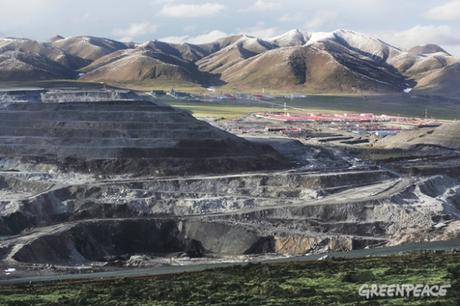GR: This is a thoughtful assessment of the problems with development goals that seek to raise everyone to the living standards of the United States and European Union. Though the article brings the problems into clear perspective, I think it is already clear to most people that we can’t extract enough resources to meet the perceived need for high levels of material wealth held by Earth’s growing human population. Cultural and social expectations need to change radically if we are reduce our population and our material consumption to truly sustainable levels.

Coal Mines at the source of the Yellow River, China
“This summer, the United Nations International Resource Panel (IRP), published ‘Global Material Flows and Resource Productivity’, a report that admits what ecologists have been saying for decades: resources are limited, human consumption trends are unsustainable and resource depletion diminishes human health, quality of life and future development.
“The report shows that consumption of Earth’s primary resources (metals, fuels, timber, cereals and so forth) has tripled in the last 40 years, driven by population growth (increasing at about 1.1% per year), economic growth (averaging about 3% per year over the same period) and consumption per person, worldwide.
“Economic growth has helped lift some regions from poverty and created more middle-class consumers, while enriching the wealthiest nations the most. The UN report acknowledges, however, that advances in human well-being have been achieved through consumption patterns that are “not sustainable” and that will “ultimately deplete the resources − causing shortages [and] conflict”.
“In 1970 — when ecologists in Canada founded Greenpeace and Club of Rome scholars prepared the original ‘Limits to Growth’ study — a human population of 3.7 billion used 22 billion tons of primary materials per year. Forty years later, in 2010, with a population of 6.7 billion, humans used 70 billion tons. Now, in 2016, we require about 86 billion tons and the UN Resource Panel estimates that by 2050 we will require annually some 180 billion tons of raw materials, which Earth’s ecosystems may not be able to provide.— Rex Weyler (Breaching environmental boundaries: UN report on resource limits)

